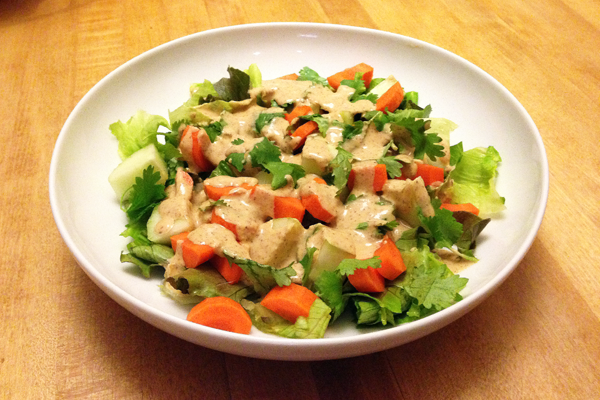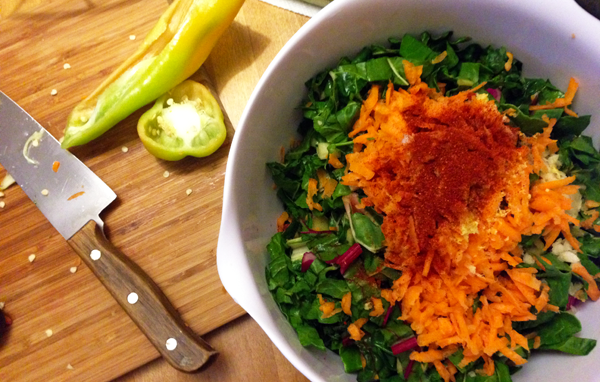I eat a lot of salads. They’re a quick, easy meal and one of the best ways to appreciate the taste of fresh from the farm CSA produce. But as much as I love veggies, for me, it’s the dressing that can make or break the salad. Give me a good, hearty but healthy dressing and I could eat a whole head of lettuce, no problem.

This past May when I was visiting cousins in San Diego we went to the Little Italy Farmer’s Market. It was pretty incredible, offering a different range of products than what we get here in Philly. We bought fresh dates, green juice blended with coffee, and live sea urchin – so cool. As we were walking through, my cousin told me there was this stand with dips I just had to try. We made our way down to the Bitchin’ Sauce stand and helped ourselves to samples. Delicious. The vegan, gluten-free, almond based sauce tasted like nothing else I’d had before. Rich and savory, definitely umami.
Once back in Philly, I looked up Bitchin’ Sauce so that I could make my own interpretation. I thinned it out to create a creamy salad dressing that made me want to lick the bowl, and I’ve made it many times since. The best part is how healthy the dressing is. Mostly almonds, it’s thick and satisfying without adding any oil or mayonnaise. Now I end up making salads just to satisfy my Bitchin’ Sauce craving.
Bitchin’ Sauce Inspired Salad Dressing
Makes 3/4 cup
Ingredients
• 1/4 cup water
• 1/2 cup almond butter
• juice of one lemon
• 2-3 cloves of garlic roughly chopped
• 1 tbsp of soy sauce or gluten free tamari
• 2 tbsp of nutritional yeast
• 1/2 tsp cumin
• 1/2 tsp coriander
• 1/2 tsp paprika
• 1/2 tsp chili powder
• 1/4 tsp cayenne
• salt to taste
Equipment
• Blender
1. Combine all ingredients in a blender. Blend until dressing is a smooth, even consistency, about 1 minute.
2. Enjoy on a salad, as a vegetable dip, or any other way you chose. Store leftovers in an airtight container in the fridge for up to one week.









